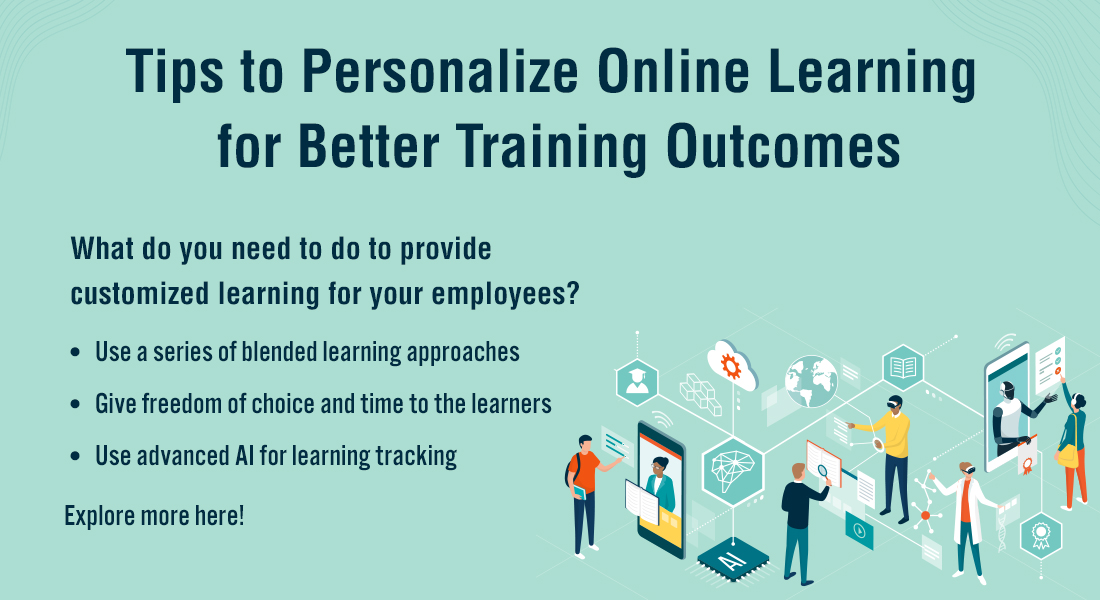Leverage E-learning to Make Your Mandatory Social Media Awareness Training Go Viral

There is no denying the fact that we live in a socially connected world. Our day is incomplete if we do not check our social media feeds such as a Facebook post, share a WhatsApp message, or post a tweet. This also includes employees in organizations, the majority of whom are active on social media.
There is every chance of what they post on their private social networks inadvertently becoming public for everyone to see. With improper privacy settings, their posts can catch public attention and ironically, with every second person active on social media, they can quickly become viral.
Organizations also use Facebook or Twitter for business promotion and communication with potential clients; it is important to know what is acceptable or otherwise to post on these social platforms. When organizations and employees are ignorant of social media blind spots, the repercussions can be irreversible. So, it is important for organizations to have a social media policy with rules and regulations for employee use of social media without risk to the organization or themselves.
Risks of Improper Use of Social Media
Training employees on social media will mitigate the risks associated with its improper use and the repercussions that can include:
Risk to company reputation
Disgruntled employees can post offensive content that can damage the company’s reputation. Or an employee can unknowingly share sensitive company information with his Facebook group, little aware that the post can become public since nothing is private in the online world.
These incidents can damage the company’s reputation and even if the employees are expelled for inappropriate behavior, damage control measures can be expensive.
Compromising sensitive company information
The extensive use of social media can backfire when employees post details about a planned company merger or share classified information such as details prohibited by an NDA with a client.
It becomes easy fodder for competitors scouting for such information and makes the company vulnerable to legal action. Also sharing pictures, videos, or updates with innocent intentions can sometimes reveal more than intended.
Legal or compliance violations by employees
Though employees are well-aware of interactions and conduct in-person, they are more prone to throw caution to the wind in the online world, because they believe no one is watching them. This can lead to irresponsible discussions about the company or sharing of classified information such as financial reports, and unbridled sharing of opinions. All of these have the potential to damage the organization.
To prevent such repercussions, social media awareness training has to be mandatory in organizations. And with the use of social media showing no signs of slowing down, employees need to know how to use social media properly. The training should cover social networking best practices such as:
- Guidelines for creating social media profiles
- Rules for privacy settings
- Guidance on social media policy of the organization
- Dos and don’ts when posting social media updates
The point is, any training that is mandatory sets itself up for resistance from employees. As a training manager, you will not reap positive results by making this policy part of the employee handbook either. In fact, the transitional nature of social media warrants that the social media policy be a living, and constantly evolving resource that employees can use, understand, or refer when required. How do you make this happen?
Make Use of E-learning
E-learning can take the pain out of the mandatory part of this training by making it engaging and interactive. E-learning strategies can be used to make it a thriving and updated resource for employees.
With online learning, it is possible to reach globally dispersed employees, especially in organizations that insist on having a universal social media policy across regions. E-learning can be accessed by employees irrespective of locations and they can be trained on a need basis. Training on policy updates is easier in the online mode.
When you opt for e-learning, you can make use of strategies such as gamification, scenarios or simulations to make the training engaging. Gamification with its badges, points, and leaderboards can motivate employees to complete the mandatory social media training. It can be used to engage, reward, and recognize employees who complete and later use the training efficiently.
Scenarios can be useful for in-depth training for social media managers or others who are responsible for social media operation in the organization. Scenarios can be created to replicate an adverse social media situation or an increase in media activity. Their responses to these simulations will help assess their preparedness to handle such situations. Appropriate feedback will help them learn.
Social media awareness training has to be an ongoing process; platforms and privacy polices keep changing, so employees should be updated on such changes, which is easier in the online mode. Moreover, every batch of new hires needs to be trained, it should be part of onboarding training to underline the company’s focus on the proper usage of social media. With e-learning, it is possible to provide training whenever required.
Like any other training, social media awareness training needs to be reinforced periodically to help employees recall what was learned. Online quizzes, spaced repetition through microlearning nuggets, and the availability of readily accessible online resources such as videos, case studies, blogs, or how-to guides can help reinforce learning.
Social media awareness training empowers employees to be more confident when they are sharing something and also do it in a safe and responsible way. They learn to distinguish what is acceptable and what is not, and protect themselves and the organization. E-learning makes it possible to deliver this training effectively with positive results. How does your organization offer this training? Post your answers in the Comments section.





![5 Benefits of Blended Learning That Will Transform Your Corporate Training [Video]](https://blog.commlabindia.com/hubfs/Imported_Blog_Media/blended-learning-benefits-corporate-training-video.jpg)